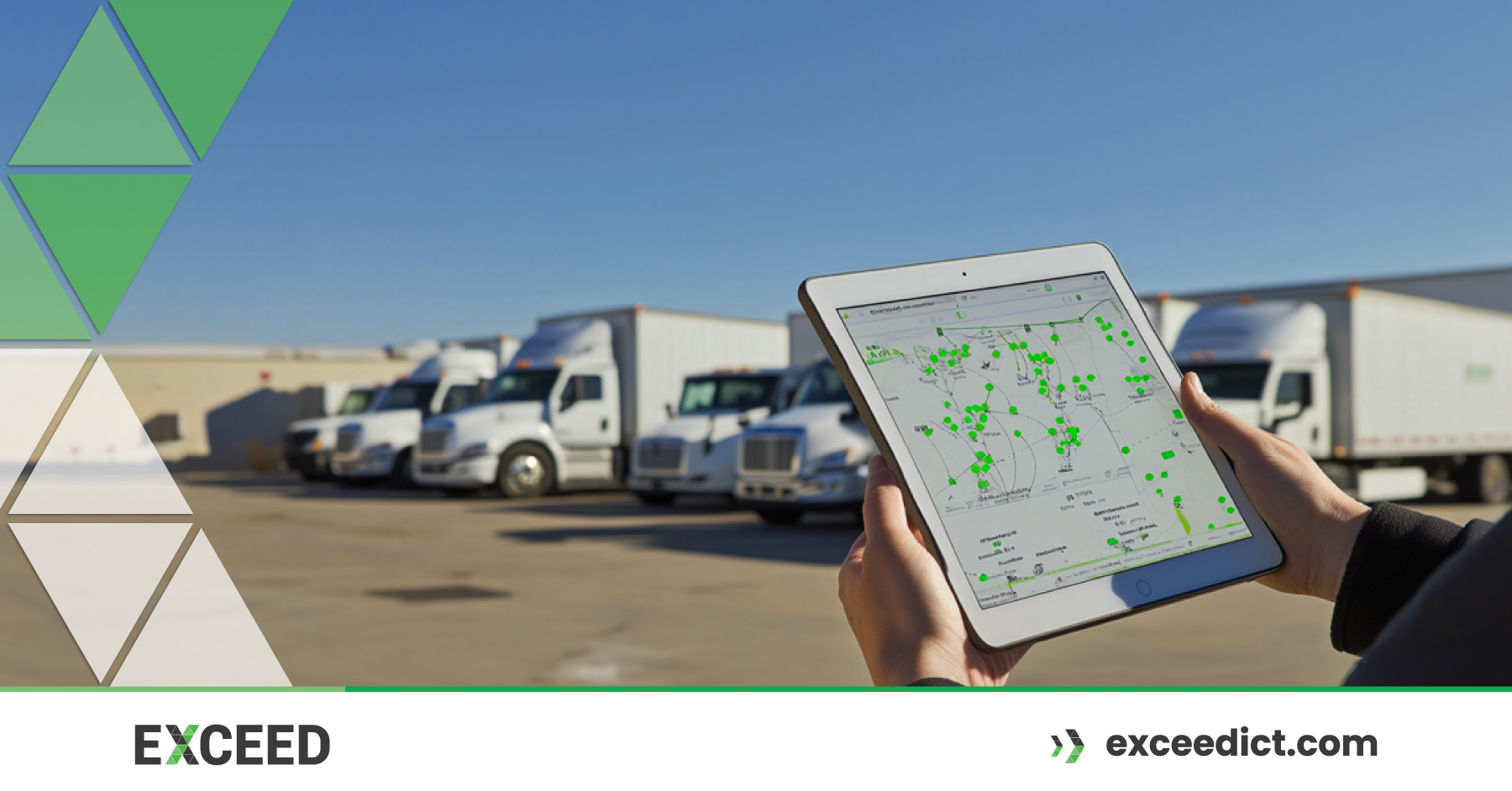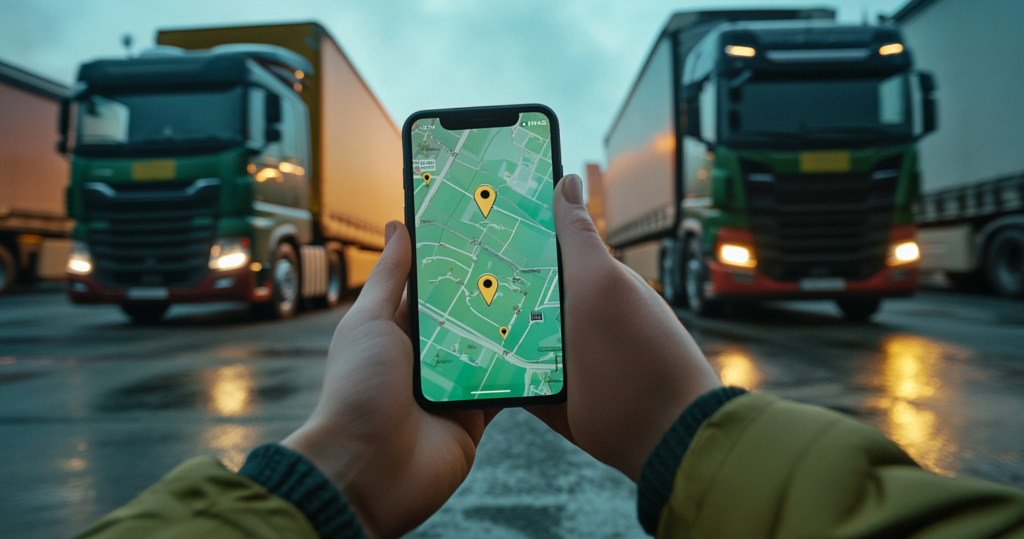
Fleet management in Australia is evolving rapidly, with vehicle telematics systems playing a crucial role in improving efficiency, safety, and cost savings. Whether managing a small business fleet or a large-scale logistics operation, telematics offers real-time data and insights that can optimise operations. This article explores the key benefits, features, and future trends of vehicle telematics and how they are transforming fleet management across Australia.
What is Vehicle Telematics?

Vehicle telematics is a technology that uses GPS tracking, onboard diagnostics, and wireless communication to collect and transmit data about a vehicle’s location, performance, and driver behaviour. By integrating telematics into fleet operations, businesses can gain real-time insights, improve efficiency, and enhance safety measures.
Why is Telematics Important for Australian Businesses?
With the growing demand for faster and more efficient transport solutions, businesses across Australia—from logistics companies to service providers—are turning to telematics to streamline operations. Rising fuel costs, road safety regulations, and increasing customer expectations make telematics an essential tool for staying competitive.
Key Features of Vehicle Telematics Systems
GPS Tracking & Real-Time Monitoring
One of the most fundamental features of telematics is real-time GPS tracking. Fleet managers can monitor vehicle locations, optimise routes, and provide accurate ETAs to customers. In Australia, where distances can be vast, this feature helps reduce unnecessary mileage and fuel consumption.
Vehicle Diagnostics & Predictive Maintenance
Telematics systems provide continuous monitoring of engine health, tyre pressure, and other critical diagnostics. Predictive maintenance alerts fleet operators to potential issues before they cause breakdowns, minimising downtime and repair costs.
Driver Behaviour Monitoring & Safety Alerts
By tracking factors like speeding, harsh braking, and rapid acceleration, telematics systems help improve driver safety. Fleet managers can use this data to offer coaching, reduce risky driving behaviour, and lower accident rates—ensuring compliance with Australia’s Chain of Responsibility (CoR) laws.
Fuel Consumption Tracking & Optimisation
Fuel is one of the biggest expenses for fleet operators. Telematics helps identify fuel-wasting behaviours such as excessive idling and inefficient route choices. By optimising driving habits and fuel management, businesses can significantly cut costs and reduce their carbon footprint.
Geofencing & Route Optimisation
Geofencing allows fleet managers to set virtual boundaries for vehicles, ensuring they stay within designated areas. This feature is particularly useful for security, compliance, and preventing unauthorised vehicle use. Additionally, telematics systems provide route optimisation, reducing travel time and improving delivery efficiency.
The Impact of Telematics on Fleet Efficiency
Reducing Operational Costs
By improving vehicle performance, reducing fuel consumption, and minimising maintenance expenses, telematics leads to significant cost savings. Australian businesses can reinvest these savings into other areas of growth.
Enhancing Vehicle Utilisation
With better scheduling and route planning, businesses can make the most of their fleet, ensuring vehicles are used efficiently rather than sitting idle.
Minimising Downtime & Improving Maintenance Scheduling
Scheduled maintenance based on real-time vehicle diagnostics prevents costly breakdowns and ensures compliance with Australian road safety regulations.
Telematics for Driver Safety and Compliance
Encouraging Safer Driving Habits
Telematics enables fleet managers to track driver behaviour, offering insights that can help implement training programs and reward safe driving habits.
Compliance with Australian Transport Regulations
In Australia, compliance with transport regulations is critical. Telematics ensures adherence to laws such as fatigue management requirements and electronic logging device (ELD) mandates.
Reducing Accident Rates & Insurance Costs
By promoting responsible driving and reducing the likelihood of accidents, businesses can lower insurance premiums and maintain a strong safety record.
How Telematics Enhances Fuel Efficiency and Sustainability?

Detecting Fuel-Wasting Behaviours
Idling, aggressive acceleration, and inefficient routing are common causes of high fuel consumption. Telematics provides real-time data to correct these issues and improve efficiency.
Optimising Routes for Fuel Savings
Route optimisation helps reduce travel time, cut fuel usage, and improve on-time deliveries—an essential factor in Australia’s expansive transport network.
Reducing Carbon Emissions & Supporting Sustainability Goals
With many Australian businesses aiming for sustainability, telematics helps reduce carbon footprints by improving fuel efficiency and reducing unnecessary vehicle use.
The Role of AI and IoT in Telematics
AI-Powered Data Insights
Artificial intelligence (AI) enhances telematics by providing predictive analytics, enabling fleet managers to make data-driven decisions that improve efficiency and safety.
Integration with IoT Devices
Telematics systems now integrate with Internet of Things (IoT) devices, including smart sensors that monitor tyre pressure, cargo weight, and environmental conditions.
Automated Decision-Making in Fleet Management
AI and automation reduce the need for manual monitoring, helping businesses react quickly to changes and streamline operations.
Challenges and Considerations When Implementing Telematics
Cost of Implementation & ROI
While the upfront investment in telematics may seem high, the long-term benefits in cost savings and efficiency improvements make it a worthwhile investment.
Data Security & Privacy Concerns
Businesses must ensure that sensitive fleet data is protected and complies with Australian data privacy laws.
Training & Adoption Among Staff
To maximise the benefits of telematics, businesses need to invest in proper training for drivers and fleet managers.
Future Trends in Telematics and Fleet Management
5G Connectivity & Faster Data Processing
The rollout of 5G in Australia will enhance telematics capabilities, providing faster data transmission and more reliable real-time insights.
Autonomous Vehicles & Smart Fleet Integration
As self-driving technology advances, telematics will play a crucial role in integrating autonomous vehicles into fleet operations.
AI-Driven Predictive Analytics for Smarter Fleet Management
AI and machine learning will continue to refine telematics systems, allowing businesses to predict trends and make proactive decisions.
Conclusion
Why Australian Businesses Should Invest in Telematics?
From reducing costs to improving safety and compliance, telematics is a game-changer for fleet management. Australian businesses that embrace this technology will be better equipped to stay competitive in an evolving transport landscape.
Final Thoughts on the Future of Fleet Management Technology
With advancements in AI, IoT, and automation, telematics will continue to revolutionise how fleets operate, making transport and logistics more efficient, sustainable, and cost-effective.
FAQs: Vehicle Telematics Systems
What is vehicle telematics?
Vehicle telematics is a system that uses GPS, sensors, and data analytics to monitor vehicle location, performance, and driver behaviour in real-time.
How does telematics improve fleet efficiency?
Telematics enhances fleet efficiency by optimising routes, reducing fuel consumption, and enabling proactive maintenance to avoid downtime.
What are the key features of telematics systems?
Key features include GPS tracking, vehicle diagnostics, driver behaviour monitoring, fuel optimisation, and route planning.
Can telematics reduce operational costs?
Yes, telematics helps reduce costs by improving fuel efficiency, minimising maintenance, and optimising vehicle use.
How does telematics enhance driver safety?
Telematics tracks driver behaviour like speeding and harsh braking, helping businesses promote safe driving habits and reduce accidents.
What role does telematics play in compliance?
Telematics ensures compliance with Australian transport regulations, such as fatigue management and Electronic Logging Device (ELD) mandates.
Is telematics data secure?
Telematics systems are designed to comply with Australian data security laws, ensuring sensitive information is protected.
How does telematics help with fuel efficiency?
Telematics monitors fuel consumption, identifies wasteful behaviours, and optimises routes to reduce fuel costs and emissions.
What are the future trends in telematics?
Future trends include 5G connectivity, AI-powered analytics, and integration with autonomous vehicles to enhance fleet management.
Do I need to train staff to use telematics?
Yes, proper training is necessary for fleet managers and drivers to fully leverage the benefits of telematics systems.
Get in Touch with our Team
and Improve Your Business Core values, Business Consulting, App Development, Cyber Security, Cryptoloc, Network Management, Telstra Expense Management and many more Services. Check our Services.



